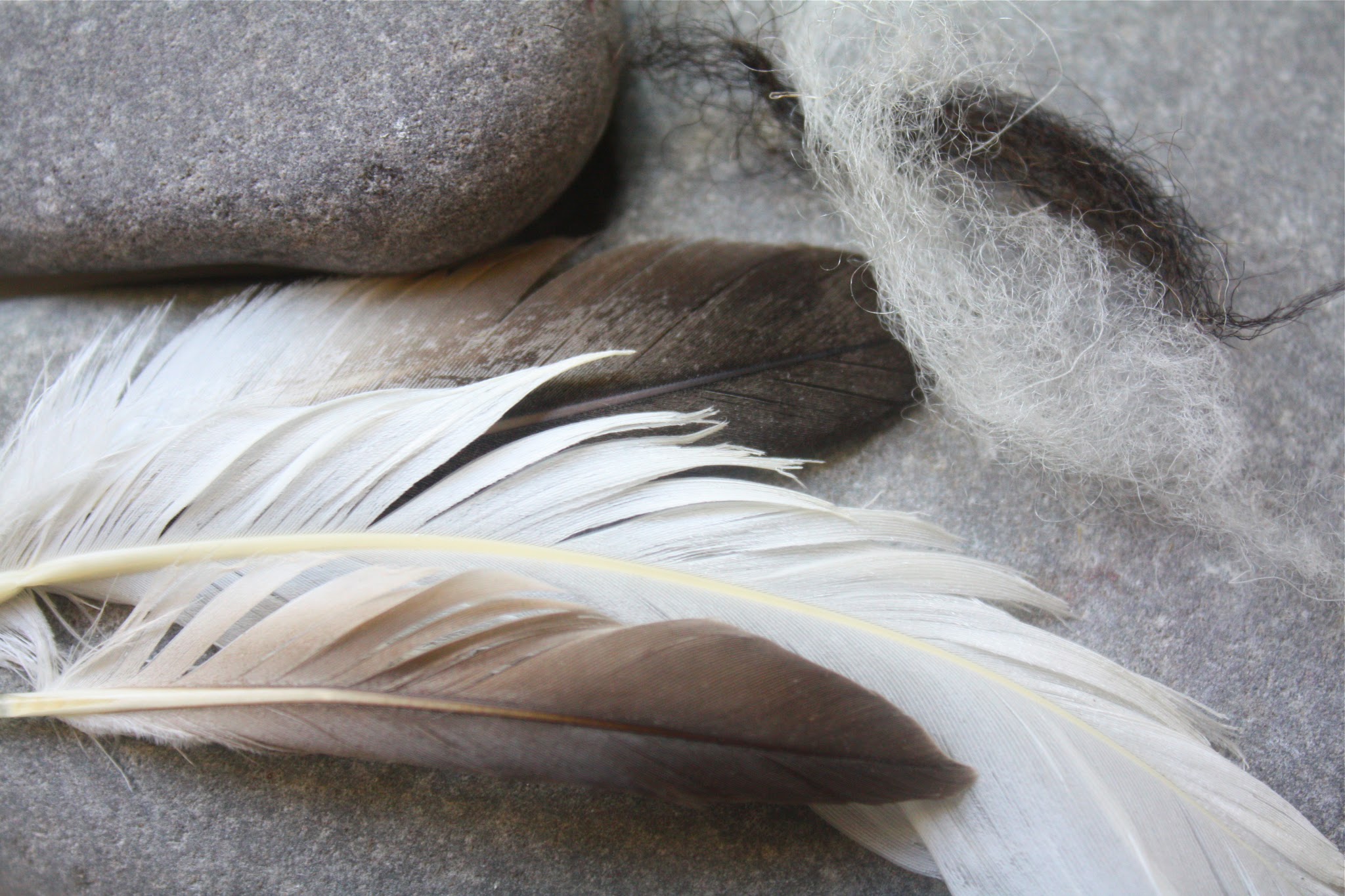Well today at least, they have all unwittingly donated fly tying materials to my cause. Yesterday
I arrived in Cornwall. I'm planning to fish for native trout
in the fast bright streams that tumble down from the moor and into the Atlantic.
I
thought it would be an interesting challenge to leave my fly boxes at
home, arriving only with some basic tying tools, a few hooks and some grey thread. I will scavenge some fly materials directly
from the local landscape and see if I can tie up some passable kebari
and catch wild trout with them.
I
have been thinking about folk fly patterns that have evolved from
materials locally to hand and about the resourcefulness of fly-tying
artisans living remote in time or space from any Orvis shop. How much
more their fly patterns must resonate with the landscape for being a
product of it. I hope that I can find a stronger connection too by
getting out and scavenging my materials from the land.
So
this morning I am up and out early on Davidstow Moor and walking amongst the sheep to look for some wool for my dubbing. Davidstow Moor Airfield was used by the RAF to launch bombing raids in
WWII. The runways and some of the old buildings are still here,
including the control tower. As I cast around the ruins looking for my wool I reflect on how Tenkara can take us to new destinations with new stories. This place certainly has its fair share - ghost stories that tell of phantom service men and women and even of a stricken bomber that replays its crash landing on dark lonely nights.
This is not a place to dwell too long and I am glad when I eventually find some fleece. Little scraps are blowing around and some is caught here and there and I collect a little in my bag. It's creamy coloured and oily and will make a nice dubbing rope for my kebari bodies. I would like some dark wool too for contrast but there are no black sheep here.
More challenging is the need for some feather for hackles. Descending from the cliffs and down into a rocky cove, sea birds wheel overhead. Herring gulls mostly, and before long I find some stray sea-wet feathers stuck on the rocks. They grade in color from chestnut through greys, cream and white. They are very oily and the filaments are too long and stiff to wind hackles from.
But with a bit of trial and error I find I can remove the filaments separately from the central flue and stack them around the hook shank and tie in. Not a bad stiff-hackle kebari, and using the downy lower feather, I can also make a soft-hackle version sheep and herring gull kebari.
Keen to put them to test, I arrive at the little moorland stream with high anticipation but a little anxiety too. It was bold to drive 300 miles without my usual fly-box of tricks. Perhaps too bold. It would be a shame to drive home again without saying hello to a few wild brownies. Time will tell, but right now the self imposed pressure is on!
It's what some anglers would term a 'technical' little stream, - with complex braided currents, a low overhead tree canopy and highly contrasting lighting all adding to the challenge of presenting a fly and detecting takes. It's an easy river to read though, with obvious fish holding features in profusion. Creases, pools, slacks and undercuts all have trout potential and often the better fish occupy the best of these. The problem is all one of presentation, as often the best marks are separated from the angler by chaotic faster water.
The tenkara approach is ideally suited to such flow mosaics, except that here a rod long enough to hold line clear of the water is often too long to use under the low branches. My rod of choice is just 8ft in length.
Given the choice I always prefer casting to sighted fish over 'prospecting' the water and so today is all about looking and watching. I soon see a splashy rise in a slack under the far bank. Some small pale flies are flitting around the bankside and the trout is keyed on to them. I angle a cast below the overhanging branches and my folk fly lands and is hit, the hanging line plucking taught for an instant then falling slack again. It's an encouraging start but I know this pool is blown now for a while.
Further along, a down and across wet fly elicits those inevitable knocks from tiny trout parr, until a better fish properly takes. It's an average size for this stream, a lovely buttery 6 incher, now I know that my folk fly pattern is working!
A good fish for this river and the proof of the pudding for my home-spun folk fly. And for me it's rare perfection.








Loved this post. I really love the adventure you shared in gathering (foraging) your fly materials from locally available resources.
ReplyDeleteThanks for dropping by Dennis. Foraging for fly materials adds yet another dimension to tenkara . If you can remember how it felt to catch your first trout with a home tied fly then this feels the same but amplified.
Delete